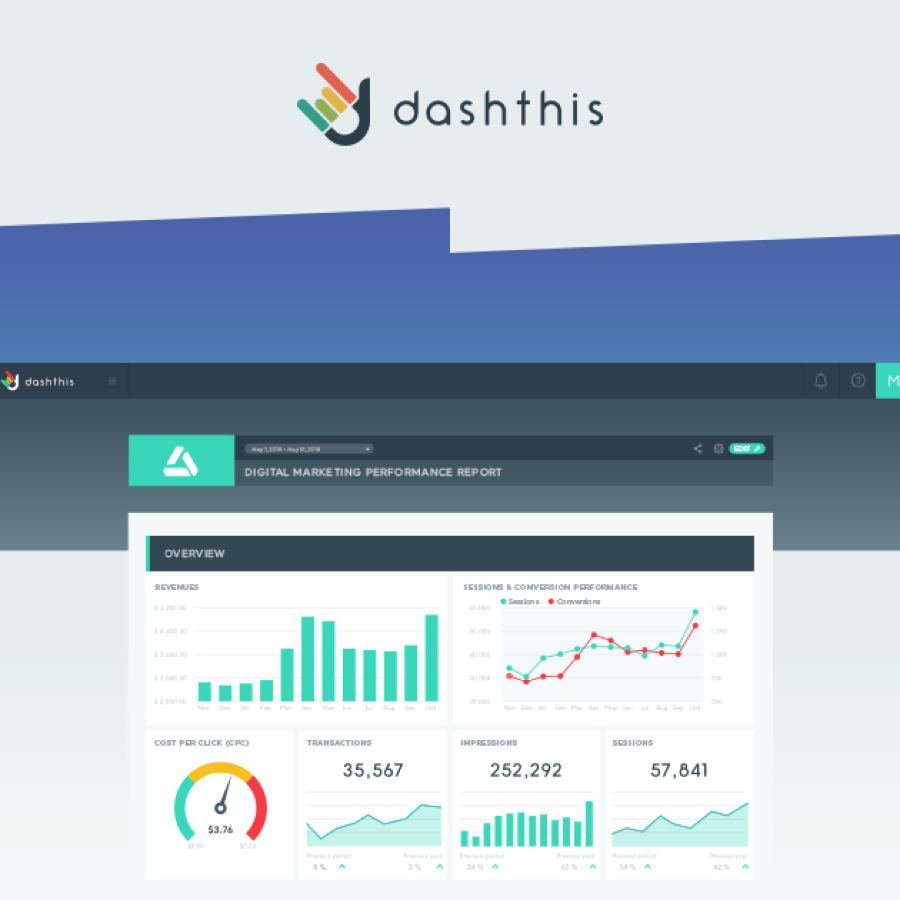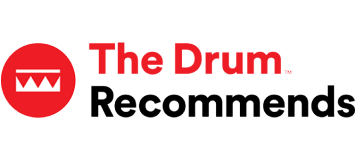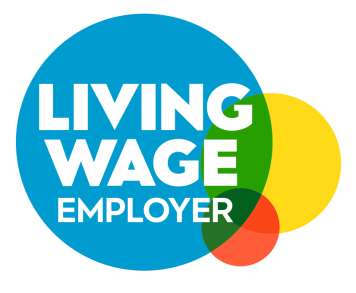5 Quick Methods to Calculate the ROI of Your SEO
Demonstrating the financial value behind the majority of digital marketing channels isn’t particularly complex. How much did we spend, how many conversions did we receive, what was the total value from conversions, and in turn what was the campaign ROI?
Of course, you can always add layers of complexity like brand value, attribution modelling, or seasonality and competition forecasting. But in its basic form, it’s easy to understand what value paid advertising can bring to your business.
Unlike other digital channels however, proving the value of an SEO campaign can be tricky.

With long-lead times, front-weighted investments and a continuing air of suspicion around the inability to instantly see results, one of the hardest parts of getting started with search engine optimisation is convincing yourself (or others!) of its potential value.
And that is exactly what we’re aiming to solve with this post!
Whether you’re a sales rep meeting with new clients, an in-house marketer making a business case to your MD, or a business owner trying to understand if SEO is right for you - by the end of this article you’ll hopefully have a little more clarity on the subject matter.
THE VALUE OF VISIBILITY
In its simplest form the goal of your SEO campaigns is to improve your standings in search engines.
It’s become an almost Jedi Master like mantra:
Higher ranking leads to higher traffic, higher traffic leads to more conversions, more conversions leads to increased revenue.

Jokes aside, it’s exactly this that we’re aiming for - improving visibility by achieving top rankings in searches relevant for the business will ultimately drive clicks from searchers wanting to purchase the products or services offered.
As search engine rankings increase (or decrease) the rate at which searchers click-through to results changes dramatically.
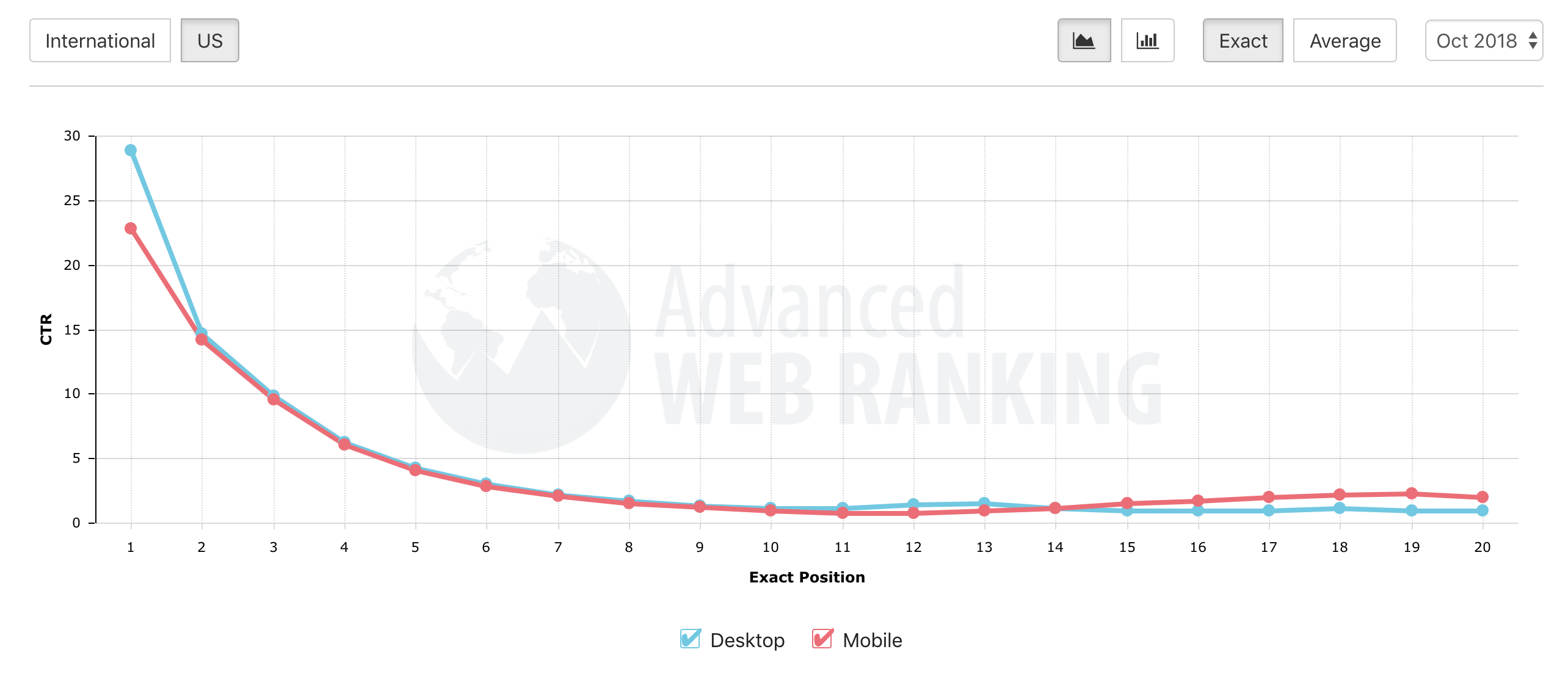
And this is precisely the way to demonstrate the basic financial opportunity of injecting search engine optimisation into your marketing mix.
If your main commercial keywords are ranking outside of the first page, you’re receiving less than 1% of potential clicks. Switch that up and reach position #1 though and we’re talking about a sweet 33% of potential clicks.
For this example we'll use a theoretical keyword which has a monthly search volume of 1000. We also know that on our site, our widgets sell for an average value of £100 per order conversion and customers convert at an average rate of 5%.
If we plug this data into a table that takes total monthly searches for our keywords, combined with our conversion rate and average order value it’s simple to see how much value can be achieved through SEO.
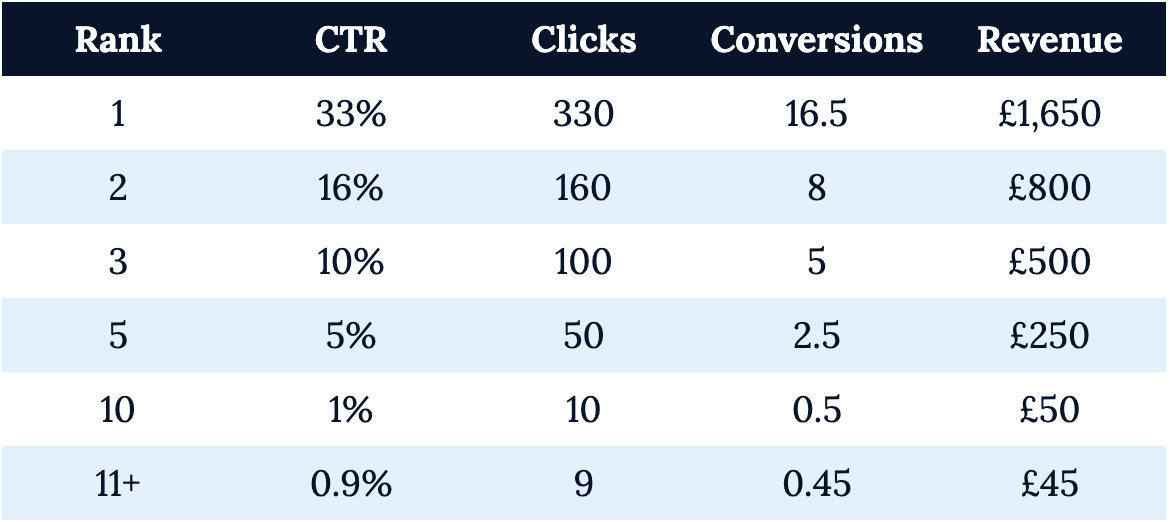
Rinse and repeat for all of your highest value keywords and voila, a fleshed out business case for SEO.
THE PAID ADVERTISING EQUIVALENT
Beyond the potential return from customers who reach your site through organic search, there is another basic way to visualise the ROI from SEO - the paid advertising equivalent.
If you’re running a PPC campaign, every click someone makes on your organic results is one less click on a paid advertisement, which is one less time you have to pay.
Month-on-month, year-on-year, this begins to compound into an amazing ROI.
It’s easy to calculate too.
If you have a pay-per-click campaign running, you should already know how much each click is costing you. If you aren’t, Google’s Keyword Planner tool allows you to research average CPCs for different terms.
Next, we’ll use the same click volume estimates as before to work out how many clicks per month we could receive from top organic rankings.
Finally, simply multiply the two together to find out the monthly paid advertising equivalent reaching different positions in organic search could save you.
We'll use the same values as before for this example, including an average CPC for our keyword of £1.39 to see what our paid advertising equivalent could be.
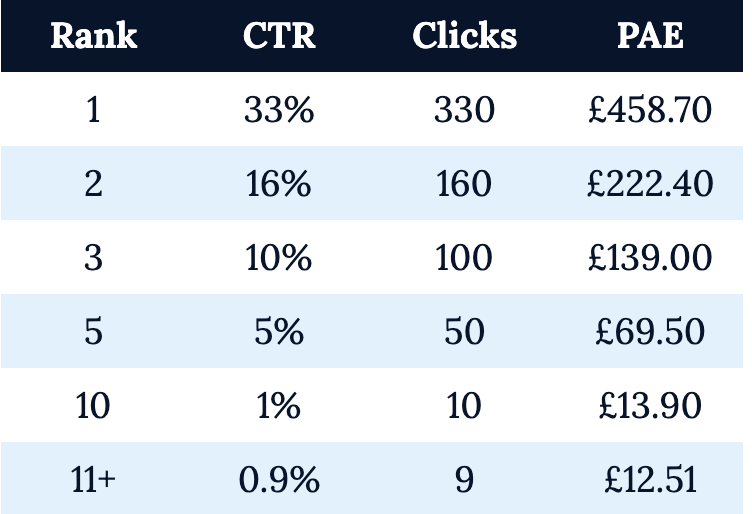
THE FINANCIAL IMPACT OF PAGE SPEED
You wouldn’t think it, but every additional millisecond it takes for your website to do what your customers want is directly impacting your bottom line.
The majority of your users will expect your website to load within 3-5 seconds, and a slowdown of even 2-seconds has the potential to double the number who bounce off your site in the quest to find someone else to satisfy their needs.
It’s on the extreme end of the examples spectrum, but Amazon reported a slowdown of just a single second would cost them over $1.5 billion in annual revenue. Insane.
Using the magic of technology and lots of averages, Google created the handy ‘Test My Site’ site speed tool which will evaluate the speed of any URL you provide it with, benchmarking it against average loading speeds.
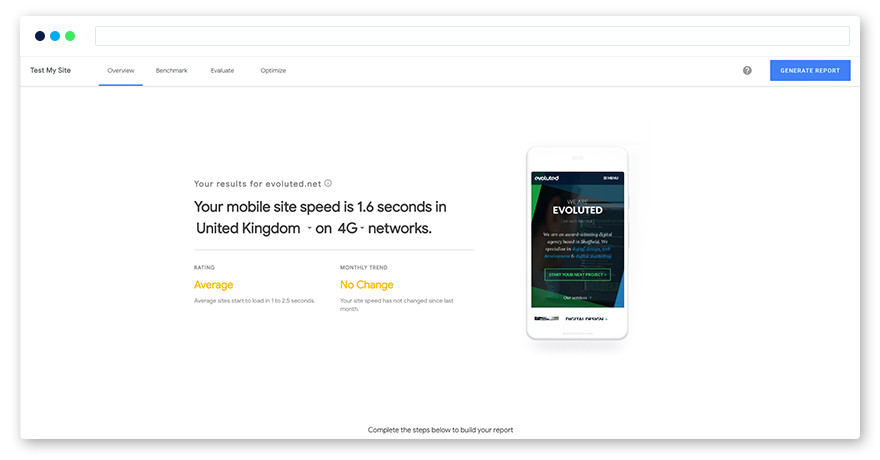
The tool then allows you to compare your speeds against competitors and provides a few recommendations to hand over to your developers which might help improve your page speeds.
What we’re really here for however is the area of the tool which allows us to work out the financial impact of page speed. Inputting our average monthly traffic, conversion rates and order values, the tool returns an (admittedly very rough) estimate of the potential revenue increase we could achieve by improving the speed at which our website loads.
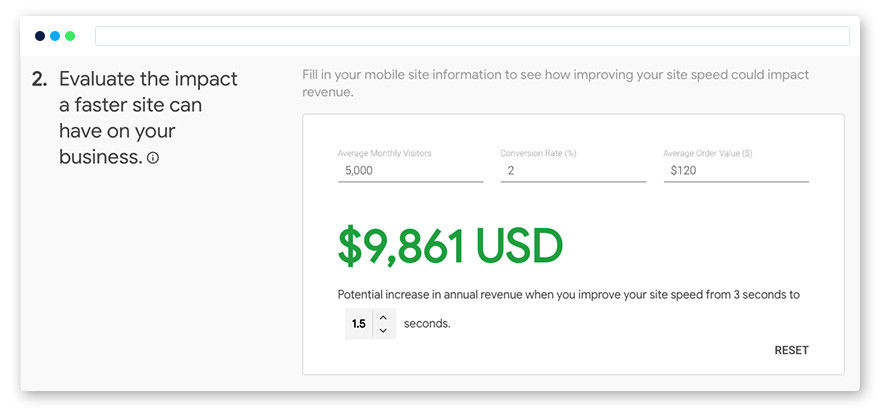
Although you should definitely take the raw values with a pinch of salt, there’s no denying how useful this is to demonstrate the ROI possibilities of investing in technical SEO work for your website.
RICH RESULTS, RICH SAVINGS
As search evolves, so do the opportunities within it. Over the past few years we’ve transitioned from the traditional mix of adverts and organic results, to more and more rich features displaying helpful information in search.
With business knowledge panels, to maps, to YouTube videos and more all being shown directly within search results, there’s more opportunity than ever to improve the ROI of your organic search campaigns.
Perhaps the most obvious example of this is the recent addition of the Google Jobs experience.
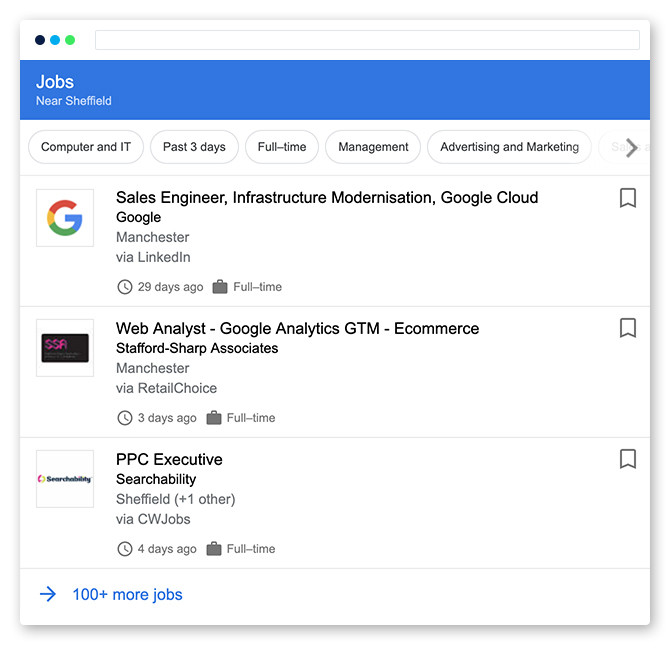
Scraping websites for structured data (code which helps specify the type of content on a page) Google have a fully-fledged job search function which appears at the top of the organic results for most searches relating to jobs.
Similarly to the paid advertising equivalent, advertising job vacancies would typically incur advertising costs.
Whether promoting a couple of new roles in your growing company, or advertising hundreds of jobs as a recruitment agency, costs can quickly begin to add up across various job boards who each have their own pricing methods.
However, by including Google Jobs within your search marketing campaigns, you now have the potential to improve your return on investment by saving some, or all, of the costs associated with advertising a vacancy.
If you advertise jobs using a CPC platform like Indeed, your ROI works out as your CPC multiplied by the number of clicks received from Google Jobs.
If you’d normally use a cost per vacancy platform like TotalJobs, work out the value per application (easier if you have existing numbers to go on) to get a rough estimate of the ROI from Google Jobs.
This is just a single example of how understanding the opportunity available from rich results can help to demonstrate the ROI of SEO. As Google continues to release new features across new verticals, there will surely be even more ways to drive value relevant to your industry.
UNDERSTANDING LONG-TERM VALUE
Whether you’re putting your own time in, the cost of a salaried team member or investing in an external agency, your goal will be to ultimately reach the point where this is no longer required, can be scaled down to just enough to maintain top rankings, or can be reallocated to another area of growth.
Once this inflection point is reached you can begin to see the long-term value of SEO.
Unlike paid advertising where the return is fairly instantaneous and a one-off exchange, SEO has the potential to drive value way beyond your direct expenditure. A year long investment into achieving top rankings for core commercial keywords could actually provide a return on investment for years to come.
On top of that, your existing SEO work will provide a great foundation for any future work on new products or services. A solid base will help new pages achieve rankings faster, driving returns sooner, and helping to compound the value from previous work.
When you’re in the thick of it it can be hard to take a long term strategic view of things, but when it comes to SEO, longevity is the name of the game!
IN SUMMARY
That concludes our brief exploration of a few of the methods that can be used to both forecast and demonstrate the financial return on investment of search engine optimisation.
Whichever method, or combination of methods, you choose to use, you should now be clued up enough to make intelligent, financially-driven decisions about investing in an SEO campaign.
We’re experts in executing long-lasting, ROI driven search campaigns. If you’ve decided it’s time to bring SEO into your marketing mix, get in touch for a free audit and proposal via our enquiry form, or call us on 0114 272 9753.






